The innovative mezcalero puts his creativity to the forefront
Documenting the world of agave spirits has offered up many wonderful opportunities. The greatest thing for me is when producers I know from a quick brand shoot or interview become close friends. Maestro Mezcalero, Jose Santiago Lopez and his partners, paper maker Alberto Valenzuela and designer Edgar Gopar, are great examples of this experience. Whether it’s at Jose’s palenque, or just my house, we have spent many happy hours talking over the trials and tribulations of the mezcal market or just sipping one during a game of darts.
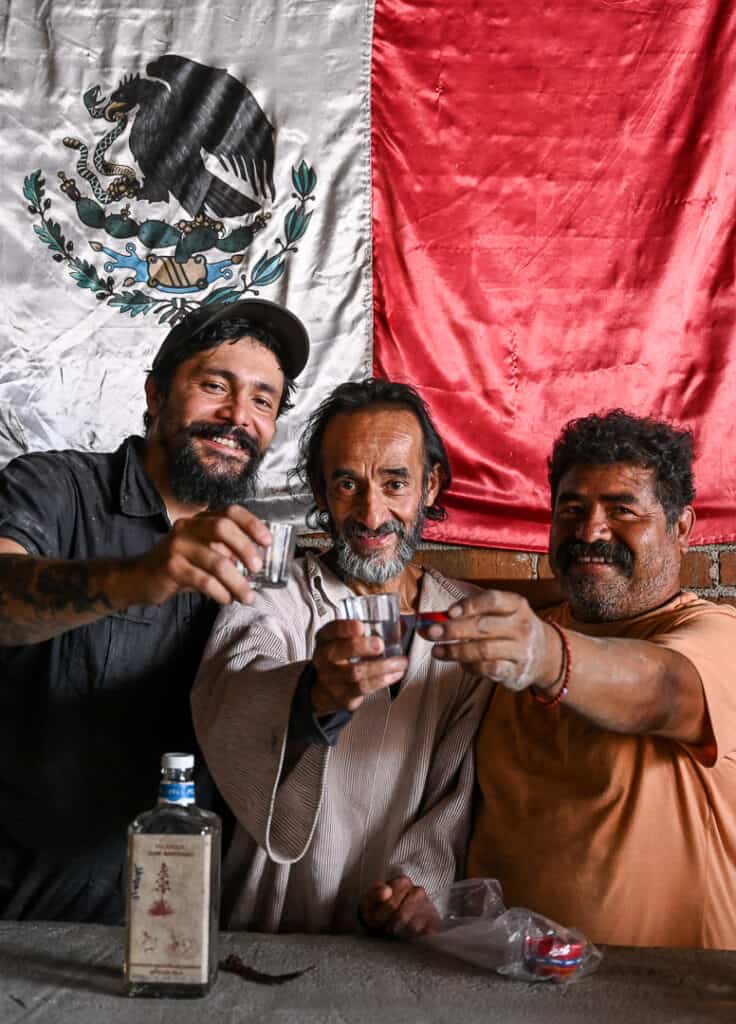
Recently Jose teamed up with Alberto and Edgar to develop the brand named “Palenque Jose Santiago”. They have become very close, as Edgar describes; “José Santiago who, like Alberto, has become family!” Edgar describes the vision of their work as being for the direct wellbeing of their families and community. “If it were not for them, what are we doing? What we want to achieve would not be possible…”
I first met Jose while I was on a photoshoot for the brand Noble Coyote in 2017. Brand owner Bernardo Sada was on a hunt to find a Jabali that was both delicious and would pass the rigorous tests that mezcal is subject to. Jabali is a particularly difficult agave to work with as it is fibrous and low in sugar, making it volatile during fermentation and typically requires three or more distillations (mezcal is usually just twice distilled). Making a market ready Jabali is testament to the skill of a mezcalero, and Jose’s is outstanding.
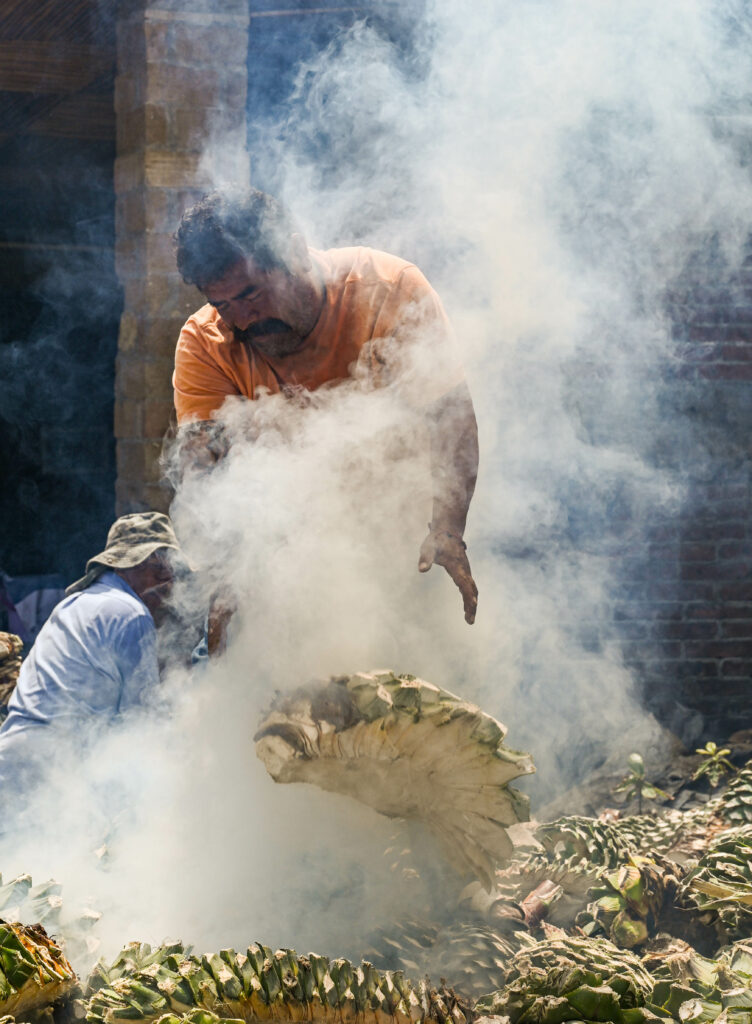
Expanding creativity in the palenque
Jose’s other expressions are also fantastic and he has a flare for experimentation. Aside from the Jabali, one of my favorites is from his ‘destilados con’ range. This is an espadin distilled with fresh tobacco that offers so much as a solo sipper, presenting agave forward with an earthy, yet spicy buzz from the tobacco. It also holds its own in a cocktail – for example – Brooks Bailey’s savory ‘Tomacco’ cocktail, which is a riff on a margarita with a base of Jose’s tobacco, roasted tomatoes and red berries. See Mezcalistas trends for 2023.
One of my predictions for this year is the rise of ‘destilado con’. There are some amazing, sensitively made versions of this. For those familiar with pechuga, this practice uses other elements, such as aromatics, fruits and flowers added to the distillation, typically of espadin, during the second round of distillation, but essentially not using the meat component. Unlike with an infusion, the experience of trying these expressions is true to the agave, with an elegant nod to the flavors added.
Jose learned the tradition of pechuga-style mezcal from his father; “My dad roasted pechuga mezcal with fruit and I learned to make distillates with many varieties.” Now Jose is exploring less traditional flavors, and is open to ideas beyond what he learned from his father. “I like to make mezcal of many flavors with herbs, grains and fruits. The tobacco one was a suggestion from a friend.”
Jose’s main goal for the future is to contribute to the sustainability of working with agave. “I always liked to participate in favor of the environment. In the future mezcal should be 100 percent sustainable.” He describes the taxes imposed on small producers as one of the biggest challenges for him, “we small palenqueros cannot pay.” He has overcome this factor by specializing in “wild and distilled mezcals with many varieties.”
Being innovative in the use of agave isn’t just at the point of distillation, but also speaks to Jose’s goal of working sustainably. He is excited to keep pushing his knowledge of the plant, experimenting with creative uses and reviving traditional processes. He is an Artist so the uses range from making products we can consume, use, as well as sculptures and paintings made from elements he finds during his working day. “I like construction in general. I would also like to learn about sewing in the future. Maybe make clothes with the ixtle.” Ixtle is a textile made from agave fibers.
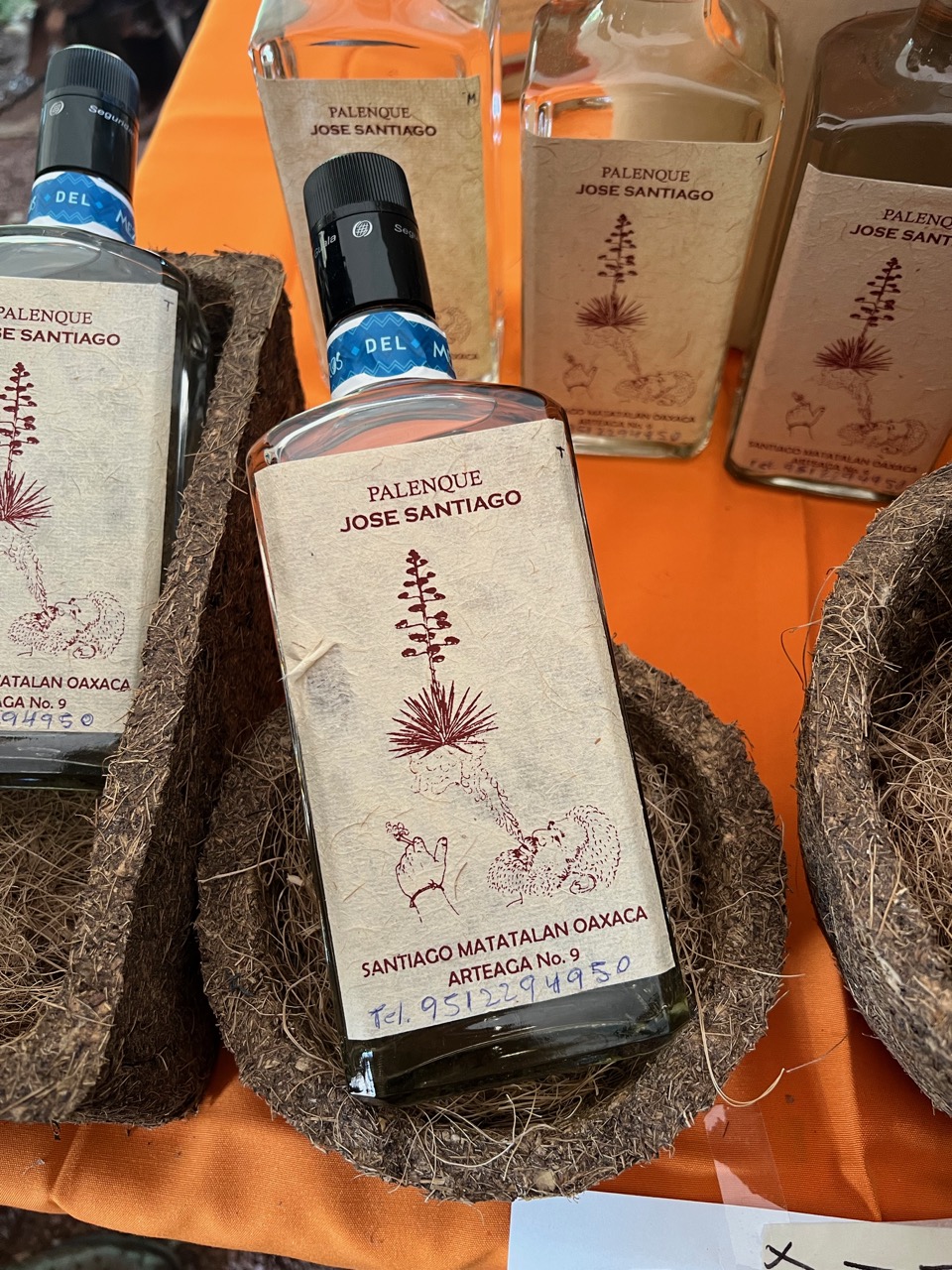
What to do with all those by products?
One of the main concerns with making mezcal is the waste that is generated in the fermentation and distillation processes. For every 750ml bottle of mezcal, approximately 10 liters of viñaza (the liquid waste product) is made and approximately 5 kg of bagazo (agave fibers) are left behind. Viñaza and bagazo are both acidic and have been depleted in oxygen. Bagazo can be used for various upcycled products such as plant pots or paper, and can be scattered in fields to protect and support the soil.
Viñaza is more complicated because it has to be denatured before it can be put into the ground. Before agave spirits were as big a business as we currently face, producers would often put this waste liquid directly into holes in the ground.
As the mezcal market has grown, especially in Jose’s home town of Matatlan, which is a hub of mezcal production, the viñaza leached into the groundwater. This causes a lowering of the PH making it undrinkable and unable to support aquatic life. (It also smells terrible). This is a huge issue for producers, and collectives are working together to try and protect the river through considerate uses of viñaza. According to Jose, “We are in the fight to rescue the water, which is already highly contaminated.”
A way to work with viñaza is to store it for enough time for the chemical profile to be safe to use as fertilizer. This takes about three months, with the addition of ash that can be taken from the pit oven used in the agave cook. It can also be used as a binding agent to make adobe blocks along with bagazo, that are common in the beautiful buildings of Oaxaca. At Jose’s palenque there are mountains of adobe. Often when we visit there is a maze of the blocks laid out in the open air as they sun-dry.
Jose has made thousands of bricks, which he is using to develop the palenque. He has big plans to make guest accommodation there as well, where guests can stay to be present for a full experience of making mezcal, and more readily access some of the distant fields where he and his family cultivate agave.
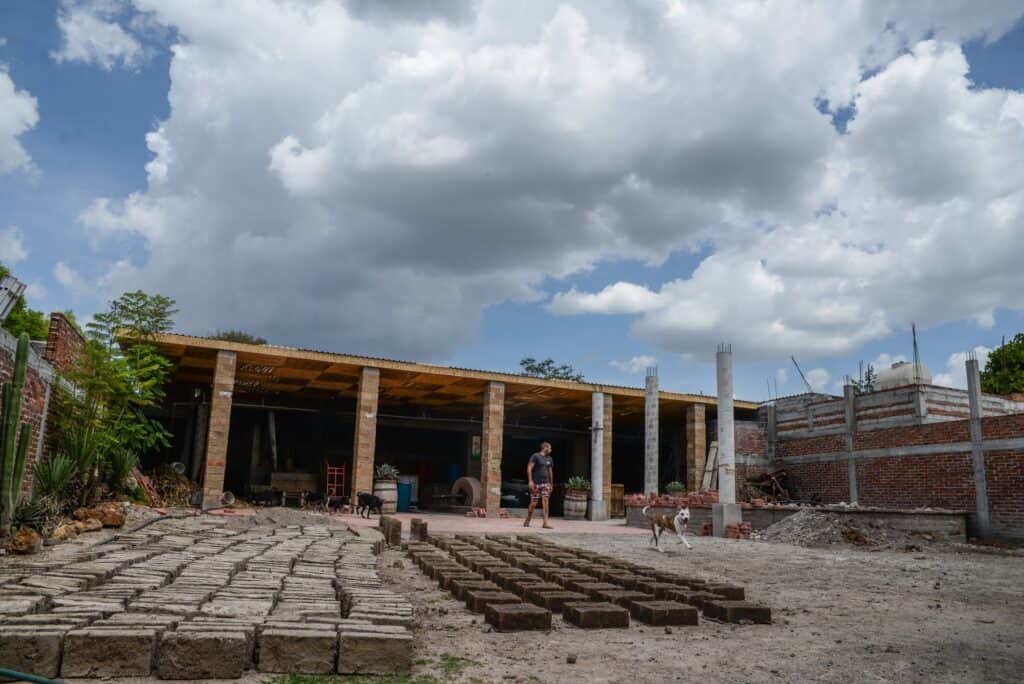
A trio of artists and innovators
Another trend we are seeing frequently is the use of agave fibers to make the labels for mezcal. Four years ago Jose Santiago met Alberto Valenzuela, a paper maker and founder of Papel Oaxaca in San Agustin, Etla. Alberto had been searching for a mezcalero who would be interested in working together on a sustainable paper making practice.
Alberto has been making paper for over two decades. He has also been a biologist and worked for a time with the National Parks. He said that the state of the environment made him angry. “I was trying to find myself. I was lost. The paper found me as a lost being. I looked outside and saw that the paper industry was all pollution, deforestation and exploitation.” As a father Alberto was also worried about the future. He explains that, “I understood that I had to change my perspective. “Instead of looking outside, I began to see myself. The problem is not that others prey, dirty, mistreat. It’s what I do myself.”
Alberto, who is originally from Veracruz, was inspired by people from all over the world. But he says “the most endearing guide was a Oaxacan”, the late artist Francisco Toledo. Alberto describes Toledo as showing “ discipline, creativity and kindness. A universal and timeless but accessible being. An iconoclastic madman.” Toledo is a well respected artist throughout Mexico and the world. He is also known for his philanthropic work, restoring libraries and galleries for public use and famously defending Oaxaca against the impact of Monsanto. He founded Centro de las Artes in San Agustin, which claims to be the first center of ecological arts in Latin America.
Edgar, a tattoo artist who designs the labels for Palenque Jose Santiago, remembers meeting Alberto in 2016, just a few weeks after arriving in San Agustín from Mexico City. Their friendship grew through casual meetings and mutual curiosity. One day in 2019, they crossed paths and Alberto said he needed help with a project in Matatlan, which was the first time Edgar had heard about the “capital of mezcal.” Together they visited Jose’s palenque and began their collaboration .
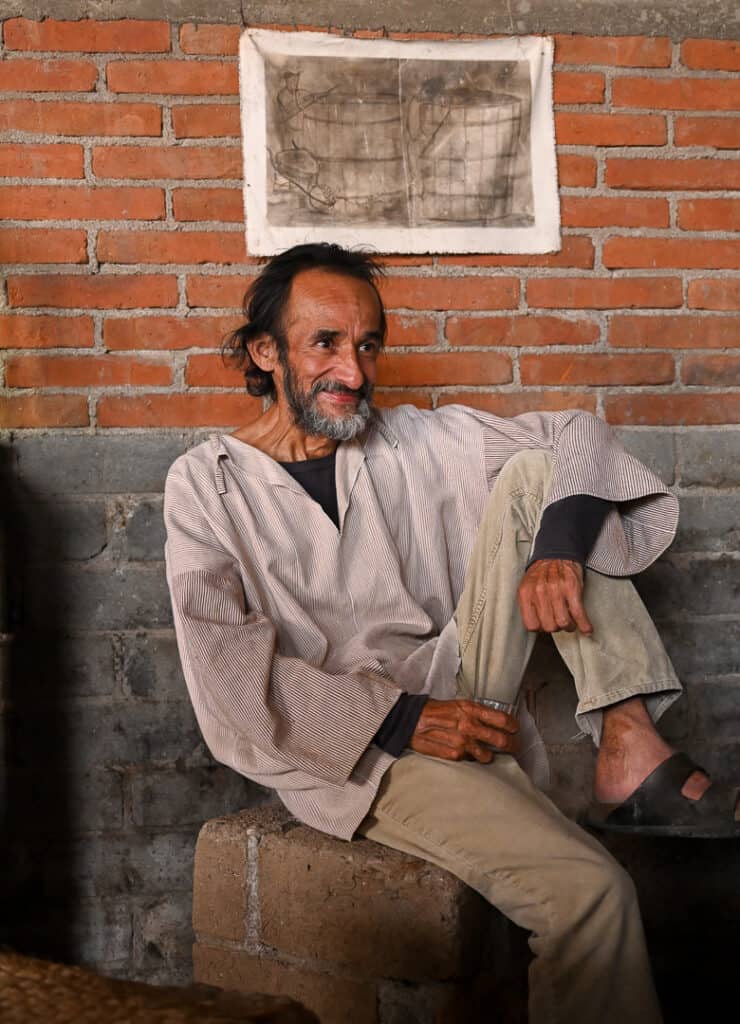
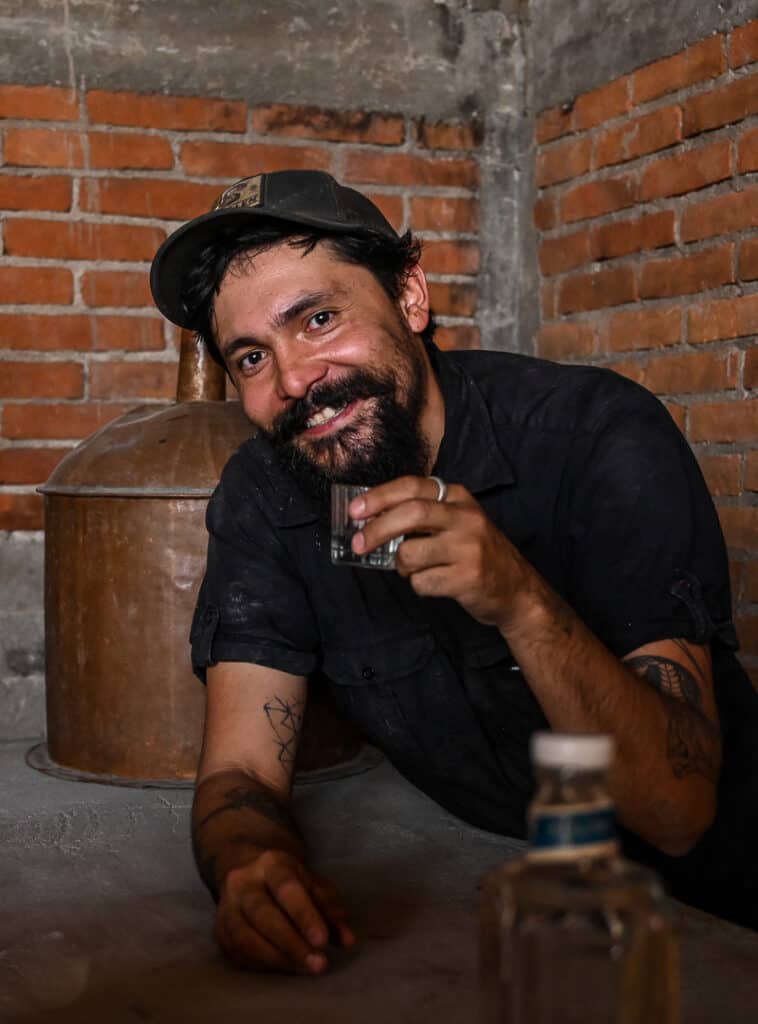
When it came to the new label for the Jose Santiago Palenque brand, Edgar remembers that José himself proposed the, “maguey-bat-hummingbird-flower, as elements of nature that are important in his culture.” According to Edgar, Jose has a revolutionary, social fighter reputation within his community. This is due to the concern that Jose has always expressed to take care of their ecosystem and make the production of mezcal something responsible.
As well as working together developing the aesthetic for the mezcal bottles, Edgar has also drawn Jose’s tattoos. Originally Edgar designed Jose a large arm piece called “Maguey y su fauna.” This led to a creative confidence in one another. Edgar describes how “ in some way I have been a translator of ideas into images. Once in the palenque, José told me the idea that he had of tobalá with the animals and I gave myself the task of listening to José’s imagination and translating it into a composition.” In the final label for Palenque Jose Santiago you can see a clear correlation between these first tattoos and the finished design.
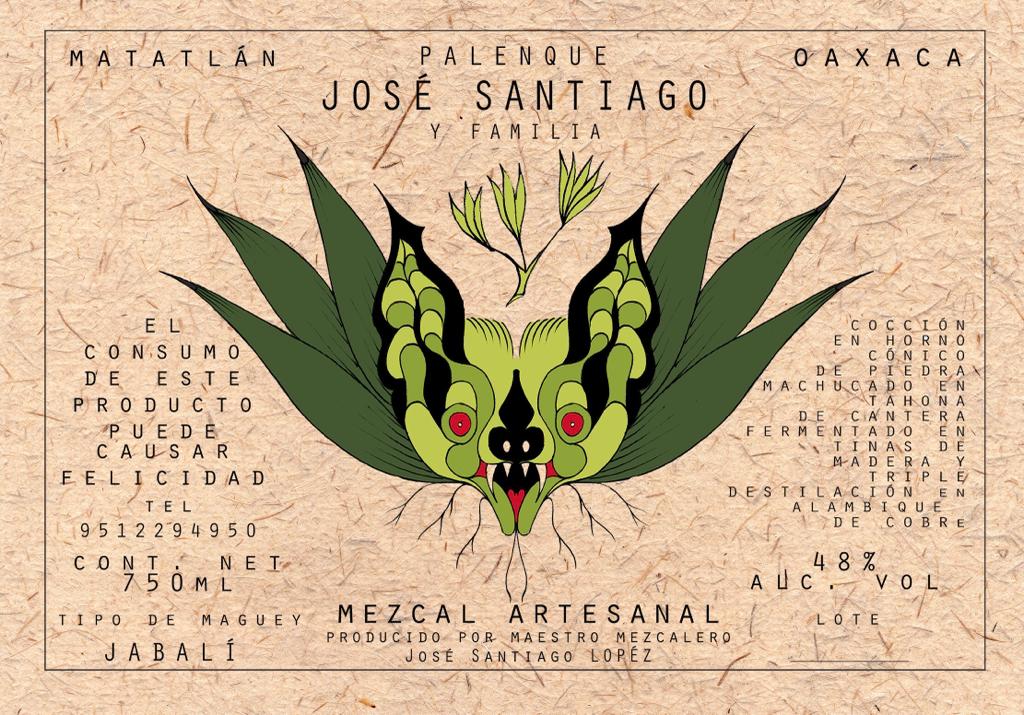
I also have an incarnation of Jose and Edgar’s idea for agave y su fauna tattooed on my arm, and not long ago had the pleasure of putting on an event with these great artists. This took place out in the fields, camping with a bonfire and pop-up bar. Edgar brought a generator and tattoo kit and both Jose and I got some ink as the sun was setting over the agave. It was a magical experience that concluded with mezcal martinis at dawn.
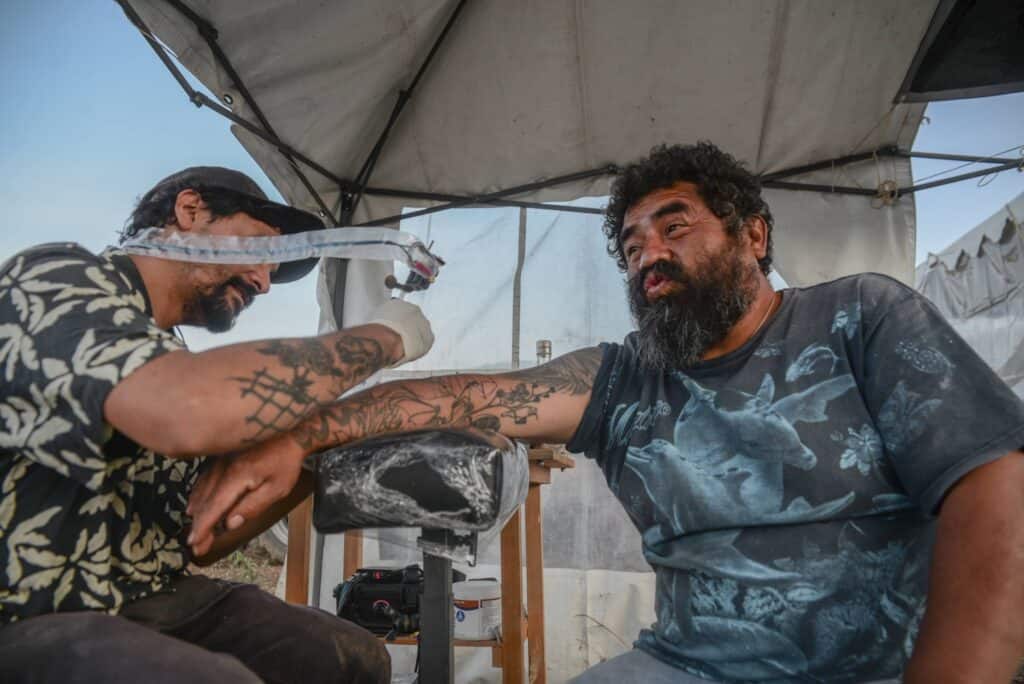
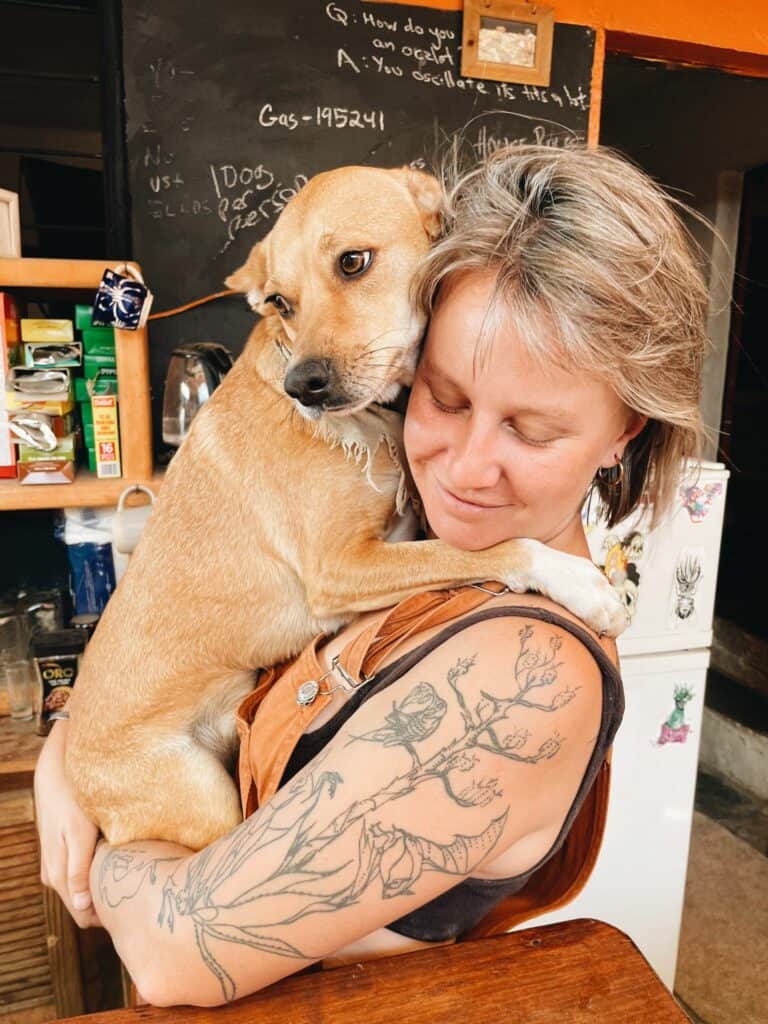
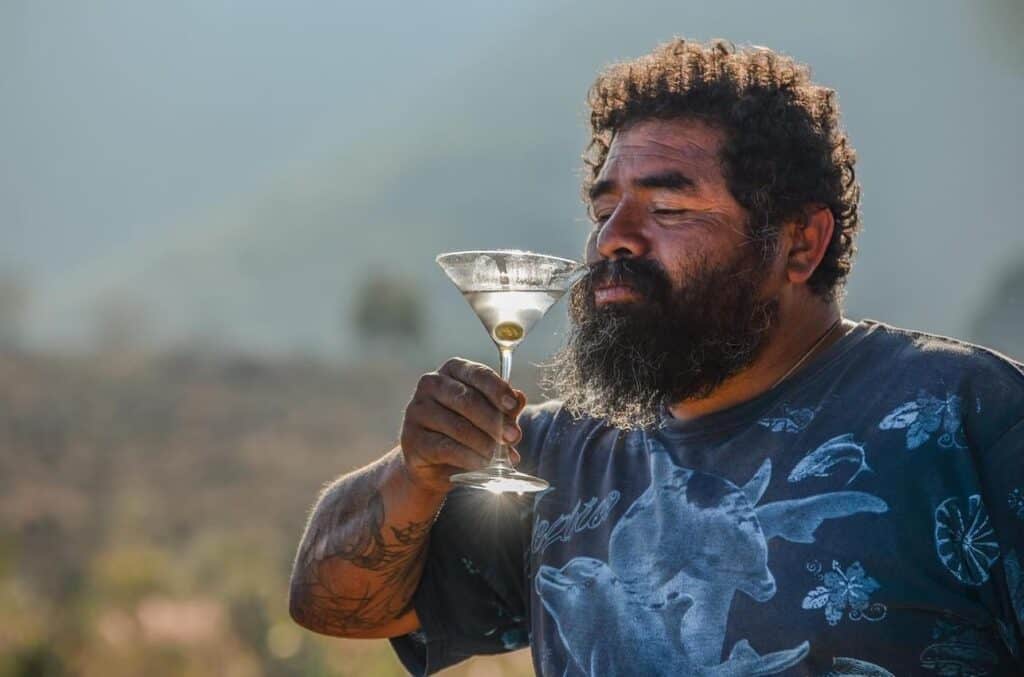
Jose is refreshingly open-minded and has a head for innovation. This applies both to the spirits he produces and the approach to making those spirits. He has put significant time into exploring ways that agave can be used beyond distillation, especially the waste products from the mezcal making process. He is not just talking about the social and environmental impacts of making mezcal; he is acting by taking creative steps to solve these problems.
Of course these actions have not always come easily. Jose is ambitious with what he wants to achieve for his mezcal, but wants to stay small batch and sustainable. This has led to challenges. Aside from his contribution of special editions for other labels such as Noble Coyote, he did spend some time developing a partnership and exclusive range with another brand. The relationship didn’t work out, and this realization led to a period of reflection for Jose. Fortunately his reputation for sustainable practices led him to meet his new partners Edgar and Alberto, and now the brand Palenque Jose Santiago and Family is coming together. “We always support each other, and make sure we stay on the right track.”
Forward thinking
Jose says he wants to leave a healthier world for the future, including his sons who will make up the fourth generation of mezcaleros in the family. His son Josue is already starting to make his own batches with agave that he received from the wider family as a celebration of adulthood.
Sharing knowledge is also at the forefront for Jose. He describes how he encourages his sons to have their own ideas about mezcal. He also recently hosted their second presentation for gastronomy and tourism students from Universidad Lasalle, Oaxaca. The aim of this event was to share the importance of preserving small batch, family run mezcal production, open up a dialogue about the variety and future of this activity in Oaxaca, and hopefully inspire future engagement to help protect this incredible work.
“The journey of mezcal is to meet many people, live together and share experiences, cultures and traditions.” says Jose Santiago
The next project for Jose, Edgar and Alberto, is developing a special edition bottle for an event in Mexico City celebrating the life of Eduardo Llerenas, patron of great musicians including Buena Vista Social Club and Chavela Varga. This will be an opportunity to bring Jose’s mezcal to a new audience, while showing how flexible they can be with their artisanal processes.
The personal quality of this project speaks to the essence of what is great about small batch, artisanal mezcal. There is a respect for every batch and every bottle. Every batch (or lot) is allowed to be unique to the specific circumstances under which it was made. Every bottle is like a special edition print, with beautiful artwork, signed and numbered by the maker. It should not be taken for granted that we will get the same one again, but instead treasure the one that we have. Each experience will be different, but if we can be open minded, better for it.


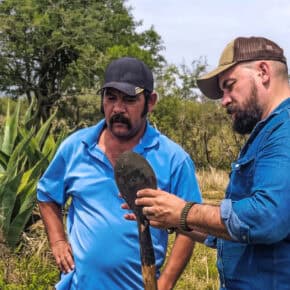
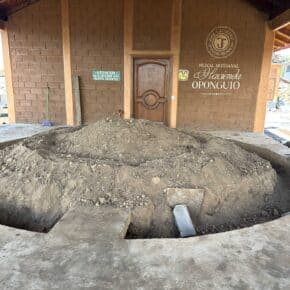








Leave a Comment